My girlfriend often does the palm relaxation technique, it looks weird but if it works it's not stupid ?
7 Chillaxing Exercises That’ll Release Stress From Your System
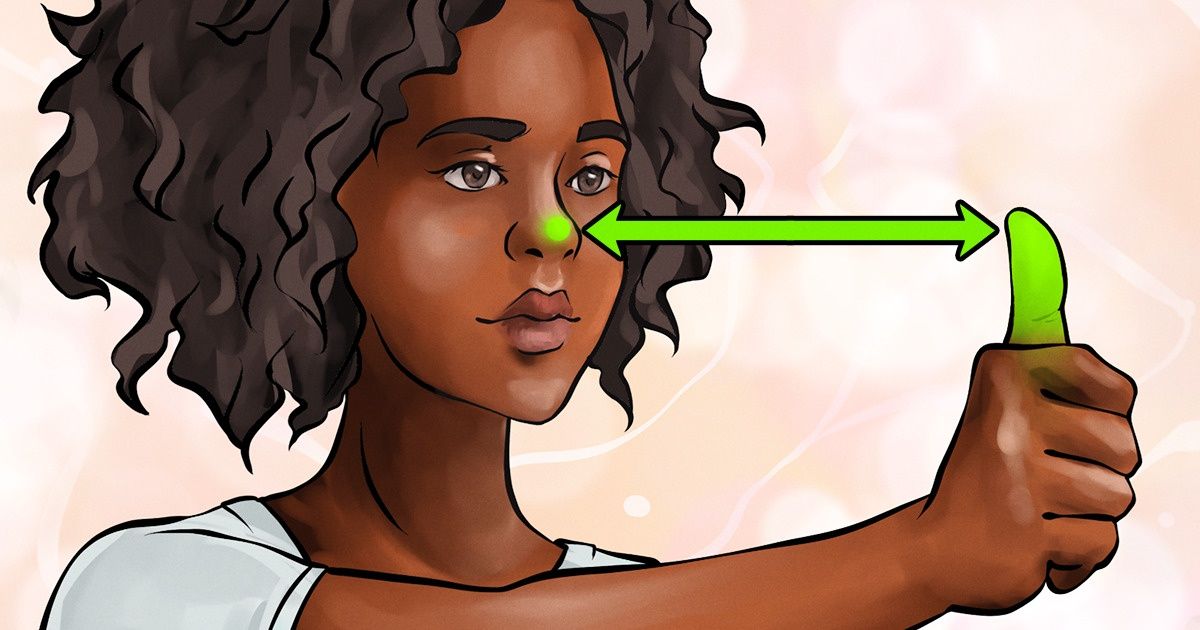
If you feel stressed, you will probably start to notice that your muscles start to tense up, your breathing becomes heavy, and your heart pounds faster. All of these are a sign that your body has been under a lot of pressure and tension, which affects your mood and health too. However, there are some simple, yet effective relaxation techniques that can ease these symptoms and make your day brighter.
Bright Side has some proven and practical exercises for you that you will find relaxing, even during the first few tries.
1. Muscle relaxation
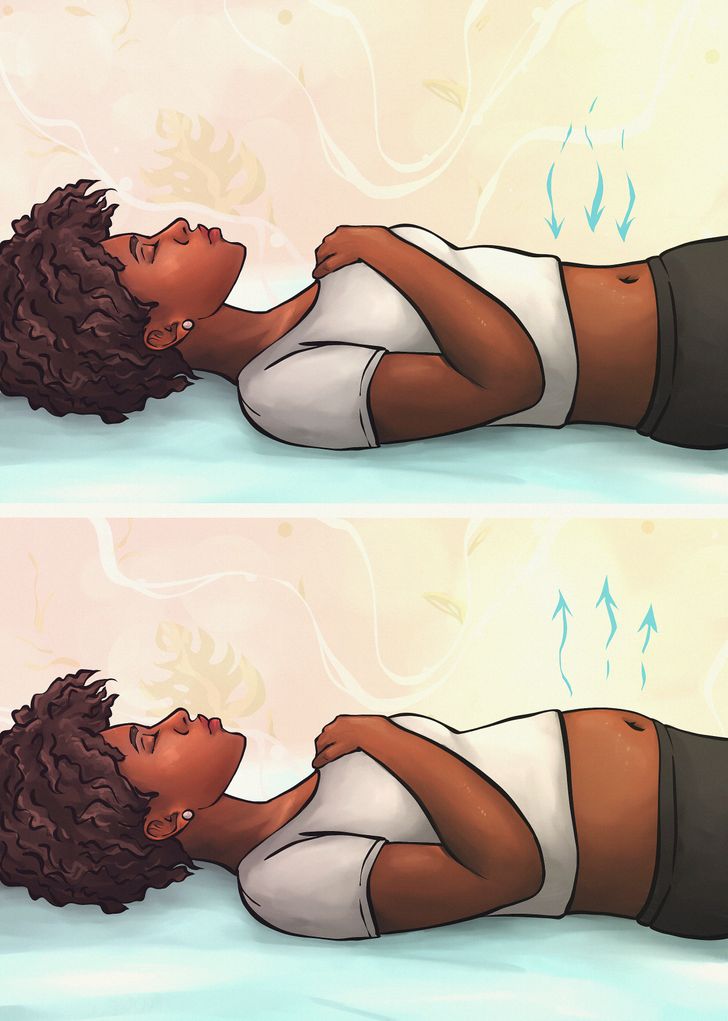
Progressive muscle relaxation techniques will not only help you deal with stress, but they will also help with chronic pain, insomnia, and anxiety. This exercise is focused on tightening or tensing specific muscle groups at a time (lower legs, thighs, stomach, etc.). The best way is to start from your lower extremities and continue upward:
- Inhale and tighten a muscle group (start with your lower legs) for 5-10 seconds. Then exhale and release all the tension.
- Now pause for 10-20 seconds to give yourself time to relax and continue with the next group (thighs, hips and buttocks, stomach, back, chest, face, around the mouth and the back of the neck, eyes and the bridge of the nose, forehead, shoulders, arms, and hands).
- When you release the tension, it is good to focus on the changes you feel at that moment. Visualization has a greater effect on the stress relief process.
- Don’t rush, slowly progress all the way up the body and continue to contract and relax the muscles, like you did with the first muscle group.
2. Alternate nostril breathing
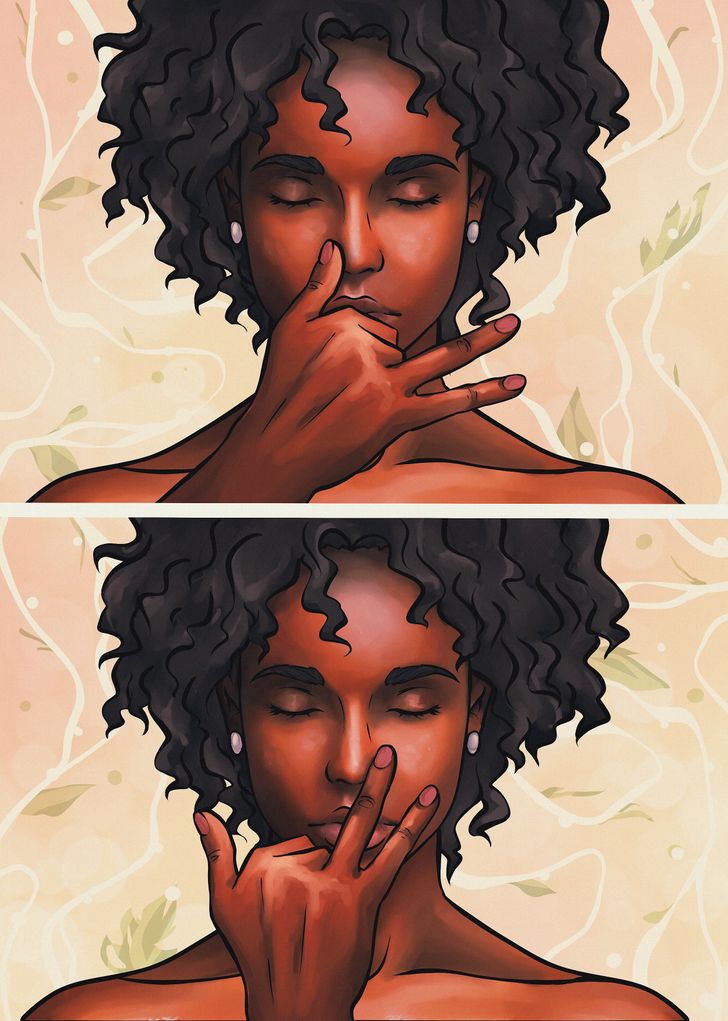
This type of breathing should be done before a yoga or meditation practice. However, it can be done even if you don’t plan to meditate or do yoga. It has a great effect on your stress levels, it will still and quiet your mind, it’ll help with anxiety, it can relax your mind and body, and it even promotes overall health benefits.
Here’s how to do it:
- Sit in a comfortable position. Place your left hand on your left knee.
- Prepare your right hand and exhale completely. Now, close your right nostril with your right thumb, the ring and the pinky fingers should be stretched out, while the others are tucked in.
- Now inhale with your left nostril, then close it with your ring finger. Open the right nostril and exhale.
- One session is 3 breaths, but you should finish with an exhale from your left nostril.
- Do this for 5 minutes and always finish with a left nostril exhale.
3. Use your senses
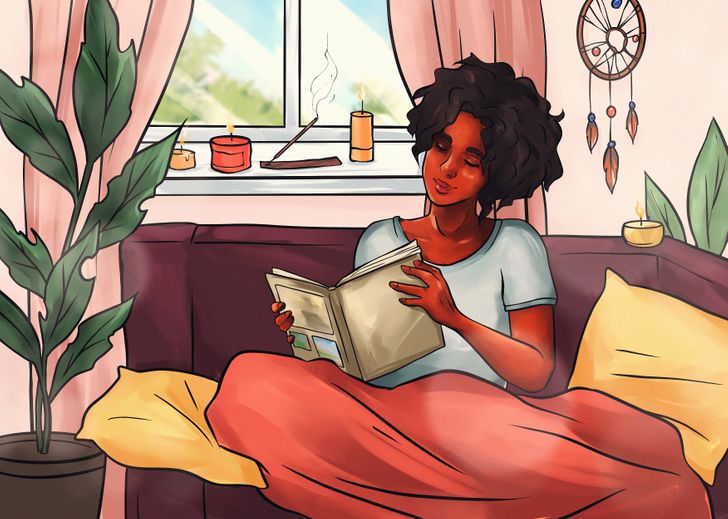
While this technique doesn’t require any specific routine, it can help with stress like any other exercise from this list. It is special because, this time, you will need to rely on your senses. Your senses are your best pals and you can use them to lower your stress levels. In a moment of stress, if you can’t focus on your positive moments, put up reminders where you can easily see them, change the background on your phone, hang up some pictures on the walls or on the fridge, etc.
Here is what you can do with your senses. Try them out to see which sense works best for you:
- Sight: look at a photo with your friends and/or family, one where you had a good time or enjoy the sight of nature, look at a flower, or even visualize.
- Smell: try out different essential oils and light up some candles with your favorite scent. Put on your favorite perfume and/or try going outside to breathe in some fresh air.
- Touch: hold a stuffed animal from a special moment in your life, pet a cat or a dog, hug, cover yourself with a soft blanket, and even wear clothes that feel comforting.
- Taste: it is time to cook up your favorite dish and enjoy it, eat some fruit, or have something refreshing to drink.
- Sound: turn on your favorite song, sing, or even dance. Turn on nature sounds, waves, birds singing, and wind that rustles the trees.
4. Count your breath
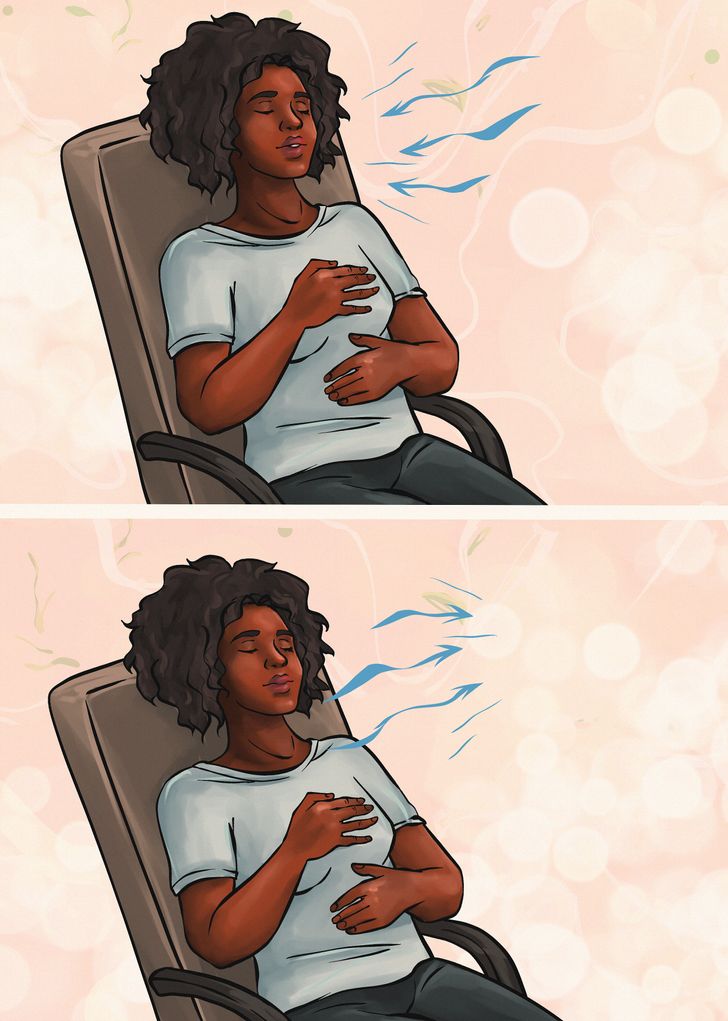
Counting your breath is a stress relief exercise that will also help with managing your food cravings, lowering your anxiety, controlling your anger, and helping you get a good night’s sleep. It is a simple practice that you can do anywhere, at any time and here is how to do it:
- Focus on your breathing pattern.
- First, empty the lungs.
- Breath in slowly and quietly for 4 seconds.
- Now hold the breath for 7 seconds.
- Exhale for 8 seconds. Do this forcefully by pursing the lips and making a whoosh" sound.
- Repeat 4 times.
5. Abdominal breathing
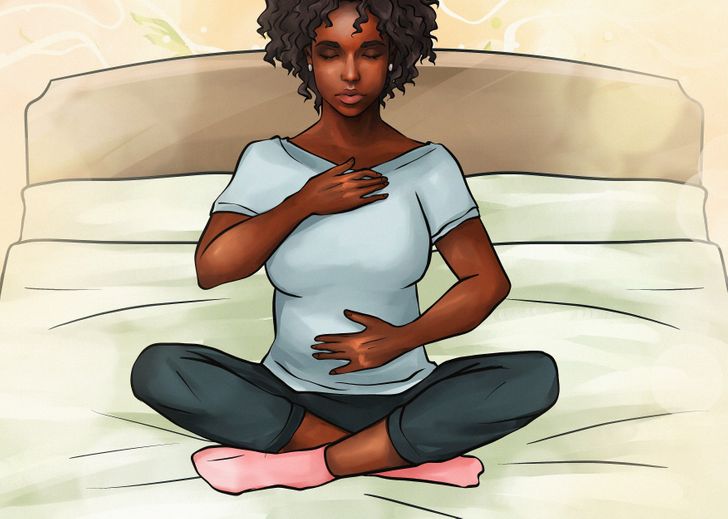
This type of breathing is also known as diaphragmatic breathing. Even if you don’t notice it, the diaphragm plays a vital role in your breathing. When you learn how to do this you will be able to inhale more air and it will feel relaxing. Do this a few times a day for 5-10 minutes, especially when you feel stressed:
- Chose which position is more comfortable. Lay down with your knees bent, sit down with crossed legs, or sit on a chair with your knees bent and all other parts of your body relaxed.
- Place one hand on your chest and the other on your belly, below the rib cage.
- Slowly breath in with your nose and let the air travel down to your belly. The hand on the chest should remain still while the hand on your belly should rise.
- Tighten the abdominal muscles and exhale while the belly goes inward, to its initial position. Exhale with pursed lips.
6. Palm relaxation

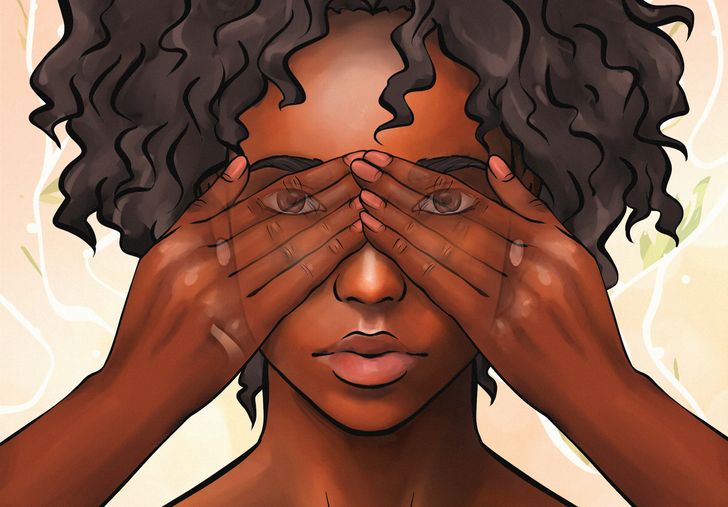
In most cases, this technique will give you instant relief, while other times it will take a few minutes. This will relax your mind and eyes from any light stimulation. It is simple to do, but make sure you follow the steps correctly:
- First of all warm up your hands by rubbing them against each other or run warm/hot water over them.
- Choose the position that is most relaxing for you.
- Position your hands on top of your eyes so that your fingertips overlap over your nose.
- Keep your eyes open, while you position your hands to make sure everything is covered well and no light comes in. If you see light, correct your position.
- Now, once everything is checked, close your eyes and start breathing.
- Exhale, inhale... focus on the breathing, the warmth of your hands, and not on your eyes.
7. Eye focusing technique
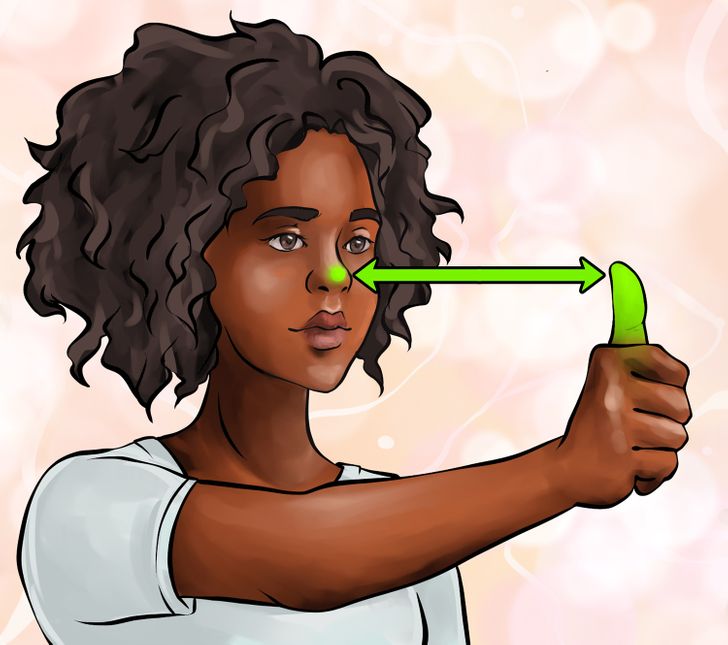
While this is an eye yoga exercise that you might find relaxing and it can also help with focusing your thoughts. With just a few simple steps, you might get instant relief.
- Put your arm up straight in front of you.
- Pull up your thumb while the other fingers are tucked in a fist.
- First, focus on your thumbnail and then focus on the tip of your nose.
- You can add a third point too.
- Do this for 5 minutes.
- You can also do it before resting with the palm exercise.
Which one do you want to try first? Do you use different stress relief techniques that you would like to share with us?
Comments
Gonna save this for later, thanks for the article!
well i don't rlly l should if i am not stupid well yeah
Related Reads
I Refused to Keep My Pregnancy Secret Just Because My Sister Lost Her Baby

My Boss Tried to Ruin My Christmas Plans—I Got the Last Laugh

I Refused to Go to Work After a Family Emergency—HR Got Involved
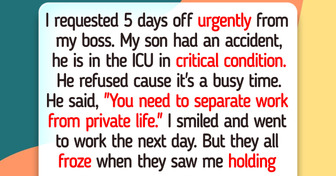
10 Sassy Comebacks That Silenced Rooms in a Second

15 True Stories With Mind-Blowing Endings That Could Rival Hollywood
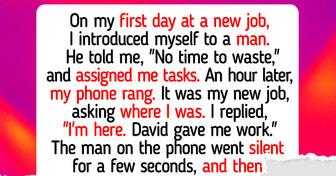
15 People Who Didn’t Want a Cat but Were Chosen by Fate Anyway

12 Stories That Prove Quiet Kindness Survives When All Else Fails

18 Stories That Show Kindness Can Be the Strongest Force of All

11 Times Quiet Kindness Lit a Spark in Someone’s Eyes Again

I Refuse to Let My Stepson Trash My Cooking While Praising His Mom’s

My Dad Let Me Believe a Heartbreaking Story About My Mom, and I Refuse to Let Him Get Away With It

I Refused to Use My Social Media to Promote My Company—Now HR Stepped In
